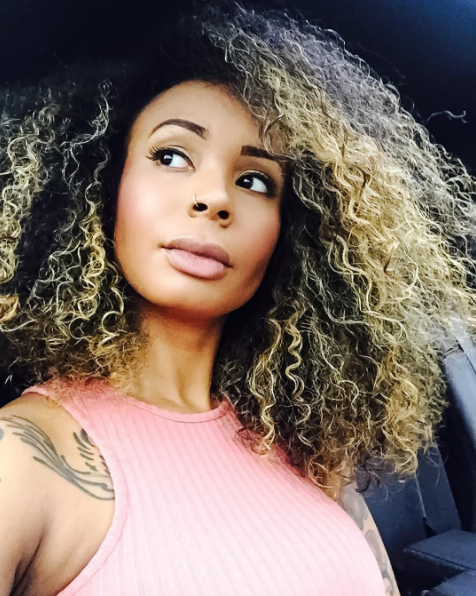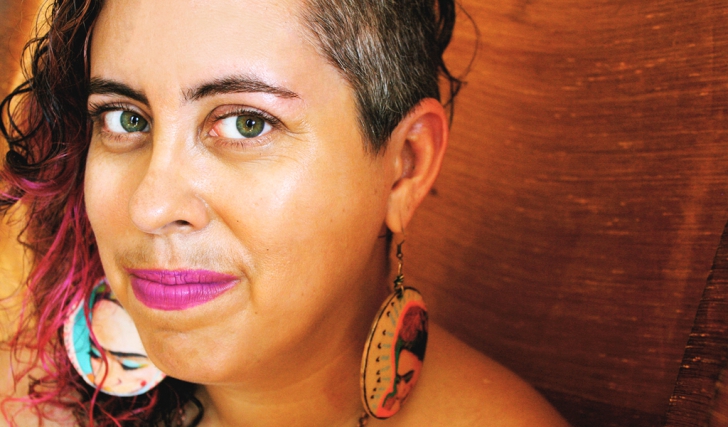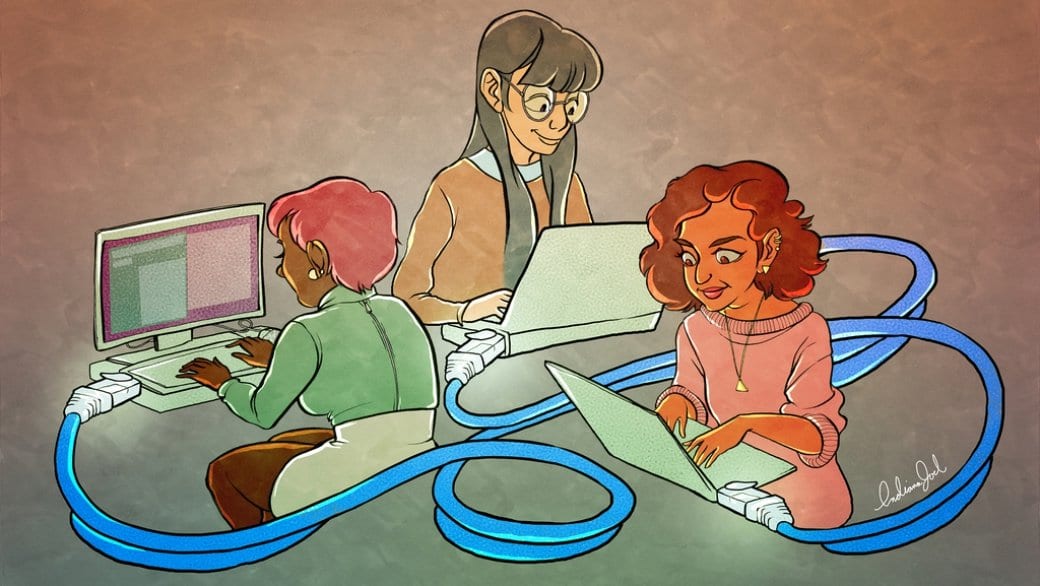In the aftermath of the hate-fuelled mass shooting at Pulse nightclub in Orlando this summer, it was hard for many queers not to think about our favourite queer bars. For me, it was Wednesday night — Hump Night — at Mercury Lounge in Ottawa when I was in my early 20s.
I remember all those nights: the $3 PBRs, being pulled onstage by the drag queens, and more than once, being one of the last on the dance floor when the lights went on at 3am. Back then, those nights were everything.
When I moved to Toronto, I never replaced my favourite bar. And I soon found that the dyke-night scene in Toronto was a rotating one, consisting of a series of monthly parties rather than a local staple. Since I’ve lived in Toronto, I’ve been privy to many conversations about the apparent dearth of lesbian bars, concerns that have continued since the final closure of Slack’s during Pride 2013.
Maggie Cassella, comic and co-owner of the now-defunct The Flying Beaver Pubaret on Parliament Street, recently dismissed the concerns about disappearing lesbian bars.
“Just like how you listen to music has changed, and how you catch a cab has changed, the way people socialize has changed too,” she told Xtra in March 2016.
And she’s right. As important as my weekly fix at the gay bar was, in my baby femme years, it wasn’t the only important site of queer community. In fact, I learned more about queerness — and femme identity in particular — on Tumblr than I did anywhere else. For a lot of my peers, the internet is where they meet a lot of their dates, and for some femmes, where they make fulfilling, long-lasting friendships.

For Julia Caron, a freelance journalist who now lives in Quebec City, the space created around the drag shows at Trent University in Peterborough, Ontario, was her first queer community and the first space where she realized that being both femme and queer was possible. But moving away from the queer communities in Peterborough and Toronto meant the internet began playing a stronger role in providing her queer community.
“I’m not going to get that femme-on-femme validation I used to get in person in bigger, urban spaces. There were moments in Quebec City that were absolutely alienating, especially since I have a male partner,” she tells me over the phone. “Having those people I met in those spaces and being able to connect online and buy their zines and write to them online or share photos is so important.”
Caron has written about her internet friends on her feminist fashion blog. She made one of her closest femme friends, Iris, in the Livejournal community of the early 2000s.
“I loved her writing style. I loved the way she wrote about herself and her life,” Caron remembers. “And the shameless way we would share selfies. It was complicated; you had to set up your tripod and find a spot to set up your camera . . . it would take a long time — people forget that!”
The two were online friends for two years before they met in person, and they remain close a decade later, despite living on opposite coasts. Caron says the friendship flourished largely due to the private, or “locked,” Livejournal circuits where things could get really intimate.
Caron says that her online connections have often felt deeper than offline ones.
“There was a part of my life where I was sharing a lot of myself online,” she says. “I started telling some of my in-person friends to go and read those spaces because it was an easier space to get to know me — like, really know me — not just think you get it,” she says.

While it seems like intimacy wouldn’t flourish in spaces where affections are reduced to a “like” or 140 characters, Kim Katrin Milan, who identifies as a queer femme, points to the ongoing existence of private Facebook groups as one space where she finds femme community.
Milan is now based in New York and travels often as a speaker and educator. Because of her schedule, the internet is one of the key ways she maintains her femme friendships. She says in reality, most public spaces aren’t safe or accessible for femmes due to transphobia, racism, ableism, misogyny and femmephobia, to name a few.
She thinks of her deaf, blind or wheelchair-using femme friends that she wouldn’t be able to connect with otherwise, because so many public spaces are not accessible. She also thinks of a femme friend in Pickford, Michigan, who is a mother of five.
“It’s hard for her to be in spaces, but I can Skype or send messages and that feels like a nourishing and loving relationship,” she says on a phone call from New York. “They save my life everyday,” she says of her femme friendships.
Caron agrees. “Having queer femme friendships is essential. It’s non-negotiable,” she says, adding that online spaces help her feel less alone as a femme. “To have a queer femme friend who sees me and knows me so well and sees my sexuality as part of me, I need that. And that’s everything from texting her or emailing her or tagging her in a bullshit Instagram post that pisses me off.”
For Milan, socializing, care work and politics are always integrated in femme spaces, whether online or offline. Workshops and conferences are another type of space that have connected Milan to other femmes in a deep and long-lasting way. She recalls the Brave New Femmes retreats, co-organized by Toronto queer femme Catherine Hernandez and others, where, “we’d come together and talk about political work and how to heal and support each other. We’d do yoga and talk about intersectionality.”

Making friends online isn’t a new phenomenon. Leah Lakshmi Piepzna-Samarasinha wrote about making friends via listservs in her memoir Dirty River. The internet offered a level of access not possible anywhere else.
“Finding other friends through listservs in the ’90s worked because I was depressed and socially anxious and panicky and crazy with C-PTSD [complex post-traumatic stress disorder] and being in the world was hard!” she writes in an email, adding that being neurodivergent means communicating through written text is often easier than verbal speech.
According to Piepzna-Samarasinha, listservs were part of the networked communications in the ’90s that queer punks of colour used to find each other, which also included zines and letters.
“I see many queer femmes of colour who are disabled, mad and/or survivors using Facebook, texting and Tumblr to do similar things today — to find accessible community. It just moves at a much faster rate,” she says. “We have always found ways of finding each other, using whatever technology is around — from letters to Facebook.”
Like Caron, Piepzna-Samarasinha gives these long-distance relationships credit for her survival. She tells me about meeting her first femme love at a teen writers’ camp and continuing the relationship almost entirely through letters.
“I carried those around in my backpack and they pretty much kept me alive through high school,” she writes.
Piepzna-Samarasinha’s memoir tells the story of some pretty epic and complicated queer times in Toronto, and she sees the community-building continuing today, noting that femmes are currently at the centre of today’s political and cultural work including Black Lives Matter Toronto, sex work organizing and disabled queer organizing
Online spaces are often the antidote for feeling unsafe and unseen in public — even queer spaces. However, this doesn’t negate the importance of creating safer queer and public spaces for a range of femmes, but rather further underlines this need. But sometimes, a retreat from the public domain is necessary.
“Of course we’d love to access public spaces, but they’re not always safe in a lot of ways,” Milan says. “The internet provides sanctuaries where we can connect.”

 Why you can trust Xtra
Why you can trust Xtra


